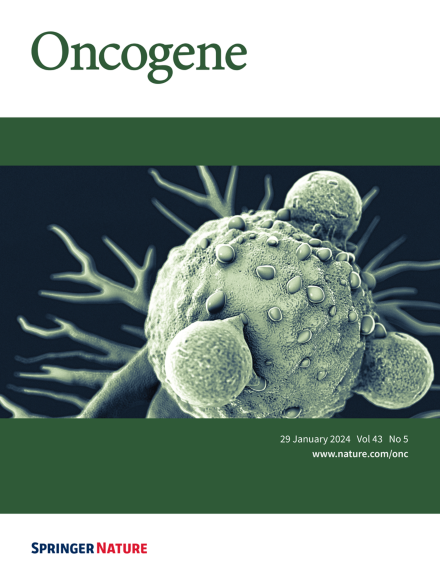造血干细胞衰老和致白血病潜能的性别差异。
IF 6.9
1区 医学
Q1 BIOCHEMISTRY & MOLECULAR BIOLOGY
引用次数: 0
摘要
性别影响许多生物学结果,但人们对性别如何影响造血干细胞(HSC)衰老和血液病却知之甚少。广泛使用年轻动物模型来研究与年龄有关的疾病使这些问题变得更加复杂。通过使用老龄和长寿 BALB/c 小鼠模型,我们发现老龄小鼠在发生髓系偏斜、贫血和白血病方面表现出性别依赖性差异,这与衰老的人类如出一辙。在群体、单细胞和分子水平上,性别差异的造血干细胞衰老特征凸显了这些差异。随着年龄的增长和寿命的延长,男性的造血干细胞群明显扩大,但这在衰老女性中的发生程度要低得多,因为衰老女性的造血干细胞群扩大的是固定的祖细胞。与女性造血干细胞相比,衰老的男性造血干细胞更容易发生 BCR-ABL1 转化,更快地发展为慢性髓性白血病(CML)。此外,衰老调节因子 Sirt1 的缺失可抑制衰老雄性小鼠的 CML 发育,但对雌性小鼠没有抑制作用。我们的研究结果首次表明,性别差异造血干细胞衰老会影响造血、白血病发生和某些基因功能。这一发现为了解年龄依赖性血液病以及治疗和预防某些血液病和癌症的性别靶向策略提供了启示。本文章由计算机程序翻译,如有差异,请以英文原文为准。

Sex-dependent differences in hematopoietic stem cell aging and leukemogenic potential
Sex influences many biological outcomes, but how sex affects hematopoietic stem cell (HSC) aging and hematological disorders is poorly understood. The widespread use of young animal models to study age-related diseases further complicates these matters. Using aged and long-lived BALB/c mouse models, we discovered that aging mice exhibit sex-dependent disparities, mirroring aging humans, in developing myeloid skewing, anemia, and leukemia. These disparities are underlined by sex-differentiated HSC aging characteristics across the population, single-cell, and molecular levels. The HSC population expanded significantly with aging and longevity in males, but this occurred to a much lesser degree in aging females that instead expanded committed progenitors. Aging male HSCs are more susceptible to BCR-ABL1 transformation with faster development of chronic myeloid leukemia (CML) than female HSCs. Additionally, the loss of the aging regulator Sirt1 inhibited CML development in aging male but not female mice. Our results showed for the first time that sex-differentiated HSC aging impacts hematopoiesis, leukemogenesis, and certain gene functions. This discovery provides insights into understanding age-dependent hematological diseases and sex-targeted strategies for the treatment and prevention of certain blood disorders and cancer.
求助全文
通过发布文献求助,成功后即可免费获取论文全文。
去求助
来源期刊

Oncogene
医学-生化与分子生物学
CiteScore
15.30
自引率
1.20%
发文量
404
审稿时长
1 months
期刊介绍:
Oncogene is dedicated to advancing our understanding of cancer processes through the publication of exceptional research. The journal seeks to disseminate work that challenges conventional theories and contributes to establishing new paradigms in the etio-pathogenesis, diagnosis, treatment, or prevention of cancers. Emphasis is placed on research shedding light on processes driving metastatic spread and providing crucial insights into cancer biology beyond existing knowledge.
Areas covered include the cellular and molecular biology of cancer, resistance to cancer therapies, and the development of improved approaches to enhance survival. Oncogene spans the spectrum of cancer biology, from fundamental and theoretical work to translational, applied, and clinical research, including early and late Phase clinical trials, particularly those with biologic and translational endpoints.
 求助内容:
求助内容: 应助结果提醒方式:
应助结果提醒方式:


